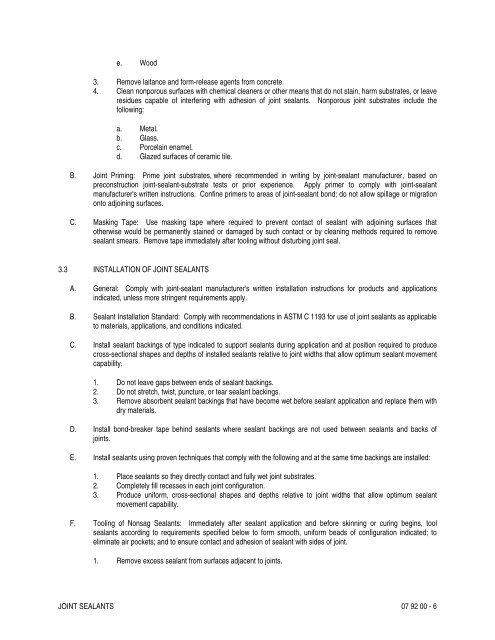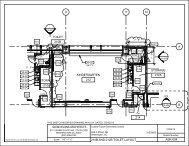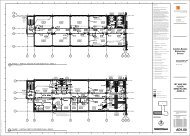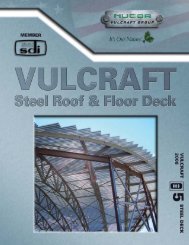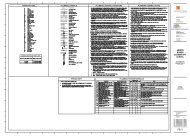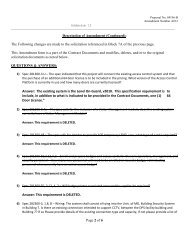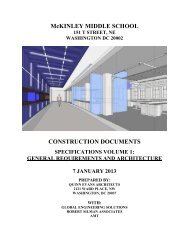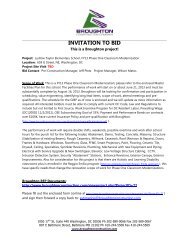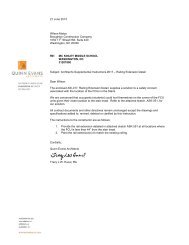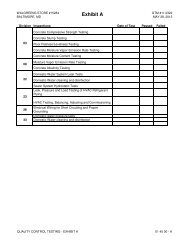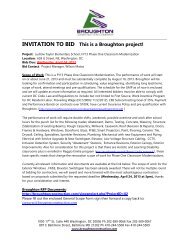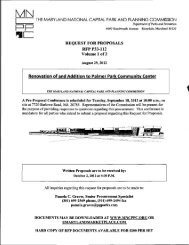DSLBD Office Fit Out - Broughton Construction Company
DSLBD Office Fit Out - Broughton Construction Company
DSLBD Office Fit Out - Broughton Construction Company
Create successful ePaper yourself
Turn your PDF publications into a flip-book with our unique Google optimized e-Paper software.
e. Wood<br />
3. Remove laitance and form-release agents from concrete.<br />
4. Clean nonporous surfaces with chemical cleaners or other means that do not stain, harm substrates, or leave<br />
residues capable of interfering with adhesion of joint sealants. Nonporous joint substrates include the<br />
following:<br />
a. Metal.<br />
b. Glass.<br />
c. Porcelain enamel.<br />
d. Glazed surfaces of ceramic tile.<br />
B. Joint Priming: Prime joint substrates, where recommended in writing by joint-sealant manufacturer, based on<br />
preconstruction joint-sealant-substrate tests or prior experience. Apply primer to comply with joint-sealant<br />
manufacturer's written instructions. Confine primers to areas of joint-sealant bond; do not allow spillage or migration<br />
onto adjoining surfaces.<br />
C. Masking Tape: Use masking tape where required to prevent contact of sealant with adjoining surfaces that<br />
otherwise would be permanently stained or damaged by such contact or by cleaning methods required to remove<br />
sealant smears. Remove tape immediately after tooling without disturbing joint seal.<br />
3.3 INSTALLATION OF JOINT SEALANTS<br />
A. General: Comply with joint-sealant manufacturer's written installation instructions for products and applications<br />
indicated, unless more stringent requirements apply.<br />
B. Sealant Installation Standard: Comply with recommendations in ASTM C 1193 for use of joint sealants as applicable<br />
to materials, applications, and conditions indicated.<br />
C. Install sealant backings of type indicated to support sealants during application and at position required to produce<br />
cross-sectional shapes and depths of installed sealants relative to joint widths that allow optimum sealant movement<br />
capability.<br />
1. Do not leave gaps between ends of sealant backings.<br />
2. Do not stretch, twist, puncture, or tear sealant backings.<br />
3. Remove absorbent sealant backings that have become wet before sealant application and replace them with<br />
dry materials.<br />
D. Install bond-breaker tape behind sealants where sealant backings are not used between sealants and backs of<br />
joints.<br />
E. Install sealants using proven techniques that comply with the following and at the same time backings are installed:<br />
1. Place sealants so they directly contact and fully wet joint substrates.<br />
2. Completely fill recesses in each joint configuration.<br />
3. Produce uniform, cross-sectional shapes and depths relative to joint widths that allow optimum sealant<br />
movement capability.<br />
F. Tooling of Nonsag Sealants: Immediately after sealant application and before skinning or curing begins, tool<br />
sealants according to requirements specified below to form smooth, uniform beads of configuration indicated; to<br />
eliminate air pockets; and to ensure contact and adhesion of sealant with sides of joint.<br />
1. Remove excess sealant from surfaces adjacent to joints.<br />
JOINT SEALANTS 07 92 00 - 6


